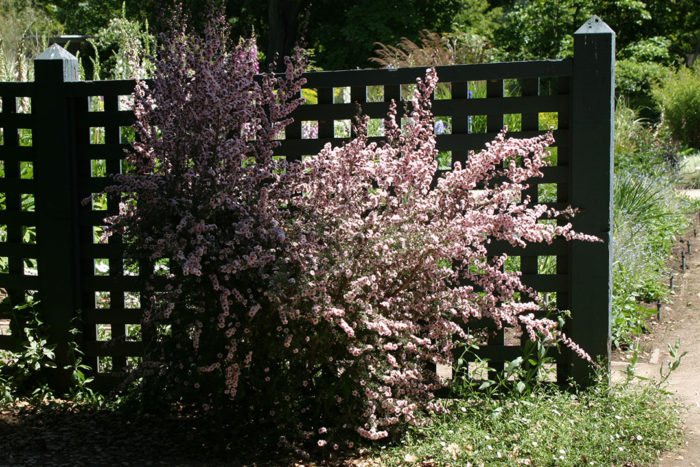
Shrubs are versatile woody plants that fill the middle ground between a landscape’s taller trees and its lower-growing perennials and ornamental grasses. As such, they are often considered to be the backbone of a garden’s structure. Most require little care once established and provide year-round interest with their varying shapes, growth habits, textures, blooms, and foliage color. Grouped or massed, sheared or left natural, shrubs can direct foot traffic, provide screening, or define spaces and boundaries in the garden. Foundation plantings help anchor your home in the landscape. Whether planted out in the landscape or featured in a container, a single, well-chosen shrub can become the perfect highlight, providing the exact focal point needed for your perennial bed or patio planting.
The nutrient-deficient soils and Mediterranean climate (hot, dry summers and cool, wetter winters) of southern and southwestern Australia have led to the evolution of a wide range of remarkable plants that are tough, vigorous, and heat-, pest-, and drought-resistant. Their successful survival adaptations might include intriguing growth habits or leathery, waxy, woolly or needlelike foliage that aid in moisture conservation and help them withstand the harsh growing conditions found in their natural environment. Many of these Aussie shrubs, hailing from conditions similar to those of much of Northern California, thrive in our dry summer landscapes with minimal care or supplemental irrigation and are excellent candidates for the water-wise garden. The islands of New Zealand have a more temperate climate and year-round rainfall, so plants from this part of the Southern Hemisphere may require additional summer irrigation to ensure best results in hotter parts of Northern California, but they will flourish in the foggier coastal areas.
For the novice gardener, it is best to steer clear of some of the more exotic Australian and New Zealand introductions, as tempting as they are. Though the blooms are extraordinary, proteas (Protea spp. and cvs., Zones 8–11), banksias (Banksia spp. and cvs., Zones 9–11), and boronias (Boronia spp. and cvs., Zones 9–11) can be frost-tender, short-lived, temperamental, and difficult for the beginner. Australian fuchsia (Correa spp. and cvs., Zones 9–10), many grevilleas (Grevillea spp. and cvs., Zones 9–10), mint bush (Prostanthera spp. and cvs., Zones 8–10), and bottlebrush (Callistemon spp. and cvs., Zones 9–10) are more forgiving and much easier to grow. However, the following four no-fail shrubs provide the newbie with a success-guaranteed introduction to the world of drought-tolerant, beautiful shrubs from the lands down under.
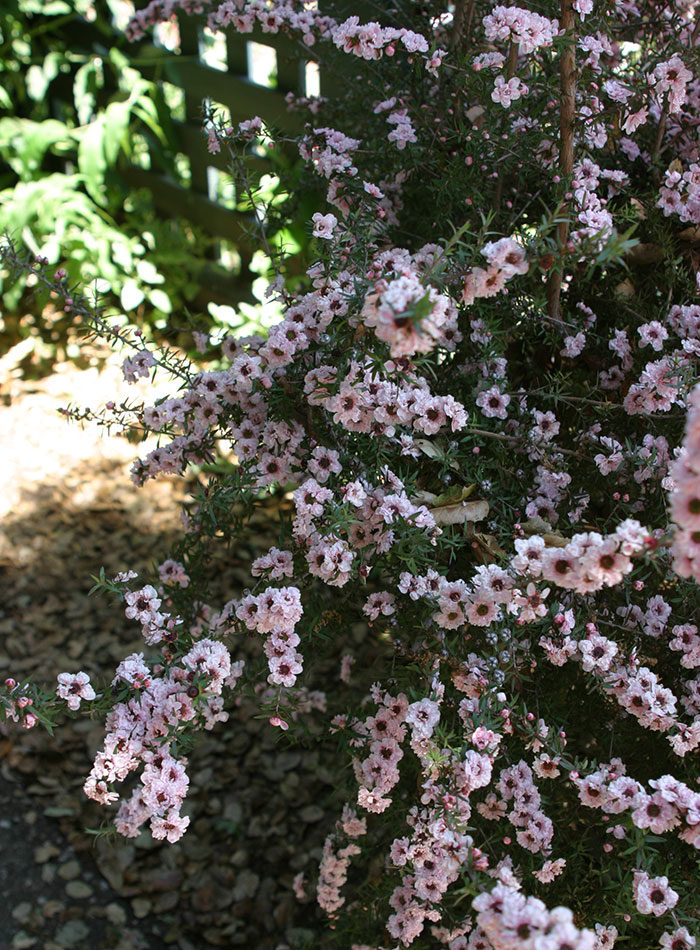
‘Appleblossom’ and ‘Nanum Ruru’ tea tree
Long-lived, easy-care tea tree (Leptospermum scoparium, Zones 9–10) cultivars are particularly valuable for the habitat garden. With their masses of showy, nectar-filled spring blooms; fragrant, evergreen foliage; and growth habits ranging from ground-huggers to tall trees, it’s easy to find a place for at least one of these pest-proof, pollinator-friendly Australian and New Zealand natives in your landscape. ‘Appleblossom’ is particularly delightful, with its colorful spring and fall display of dark-eyed, fully double, pale pink blooms. An upright grower to 8 feet tall and wide, it’s a great candidate for screening or hedging. Tight on space? ‘Nanum Ruru’ is the perfect choice. Growing only 2 feet tall and wide, this dwarf variety’s dense branches are clothed year-round in tiny, burgundy-blushed, deep-green leaves that are perfect for highlighting the showy, deep-pink, springtime blooms. Hardy to Zones 9–12, this petite beauty grows best in full sun, is not fussy about soil, and requires minimal irrigation once established. It makes a stunning accent for rock gardens or the front of a dry border.

‘Tasman Ruffles’ kohuhu
Need an easy-to-maintain, easy-to-grow, attractive evergreen screen to improve privacy, block an unsightly view, or provide an interesting barrier between garden areas? There are many cultivars of the popular New Zealand native Kohuhu (Pittosporum tenuifolium, Zones 9–11) that meet these requirements, but ‘Tasman Ruffles’ is one of the best. Though it can be clipped into an even tidier form, ‘Tasman Ruffles’ naturally grows into a slender, cool-hued, dense pyramid, quickly reaching 10 feet tall and 4 to 5 feet wide without any shearing or shaping. The almost-black stems are covered in small, slightly ruffled silver-green leaves (sometimes with an ivory margin), and springtime brings clusters of honey-scented, tiny, purple-black blooms. As lovely in a container as it is in the landscape, this versatile beauty is hardy to Zones 7–10, grows well in full sun to partial shade, tolerates most soil types, and prefers regular irrigation until established.
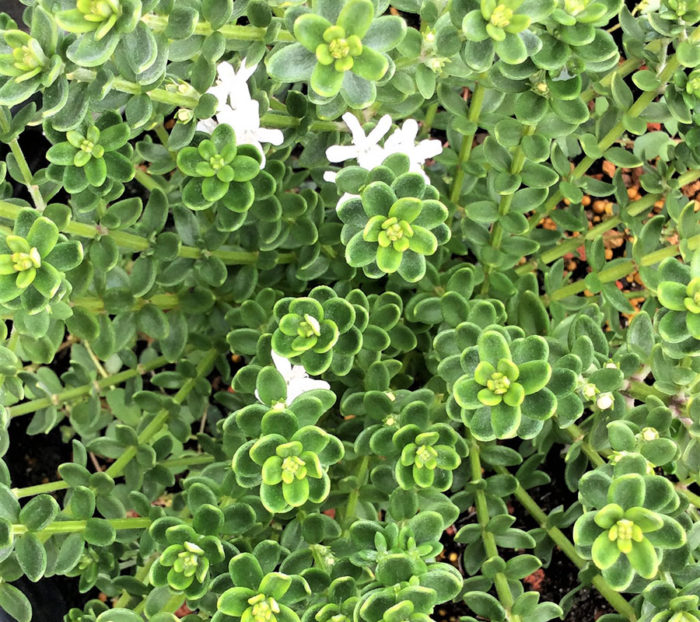
Grey Box™ dwarf coast rosemary
The ideal drought-tolerant, easy-care alternative to a boxwood—albeit one with silvery gray leaves—is the Australian Grey Box™ dwarf coast rosemary (Westringia fruticosa ‘WES04’, Zones 9–11). With almost succulentlike foliage and a naturally compact, rounded shape, this tough little evergreen grows 2 feet tall and wide and fits perfectly as a low-growing hedge or as strategically placed to add textural interest to your sunny rock garden or perennial border. Grey Box™ is generously sprinkled with snowy white blooms from late winter through summer, takes well to shearing if an even tidier shape is desired, and works as well in the container as it does in the landscape. Hardy to Zones 9–11, unfazed by browsing deer, disease free, and tolerant of diverse soil types and sea breezes, Grey Box™ does best grown in full sun and has minimal water requirements once established.
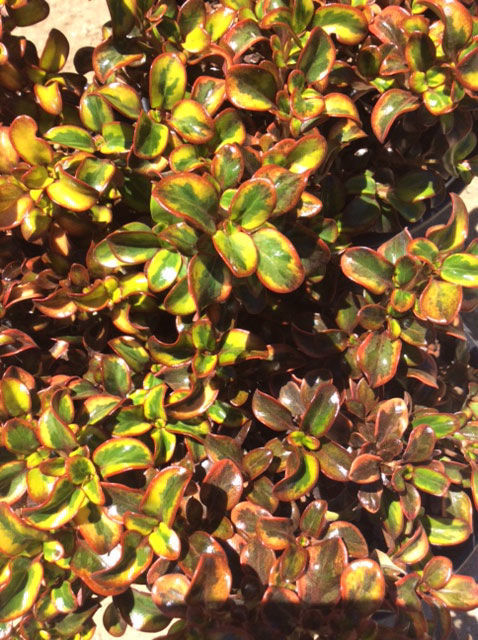
‘Tequila Sunrise’ mirror plant
Hardy to Zones 9–10 and tolerant of colder climes if protected from frost, ‘Tequila Sunrise’ mirror plant (Coprosma repens ‘Tequila Sunrise’) is an exceptionally beautiful, easy-care evergreen hybrid of a vigorous New Zealand native shrub. Commonly known as mirror plant, its startlingly shiny leaves are multicolored, with gemlike hues of emerald, gold, burnt orange, red, and burgundy all making an appearance to varying degrees throughout the year. ‘Tequila Sunrise’ is stunning planted en masse, makes a dramatic foundation planting, and works beautifully as an accent in the landscape or container. Reaching 3 to 5 feet tall and 3 to 4 feet wide, and growing in a natural, pyramidlike shape, ‘Tequila Sunrise’ performs best and displays its brightest colors if planted in full sun, with well-drained, fertile soil and regular to light watering during the summer months.
Fionuala Campion is the owner and manager of Cottage Gardens of Petaluma in Petaluma, California.





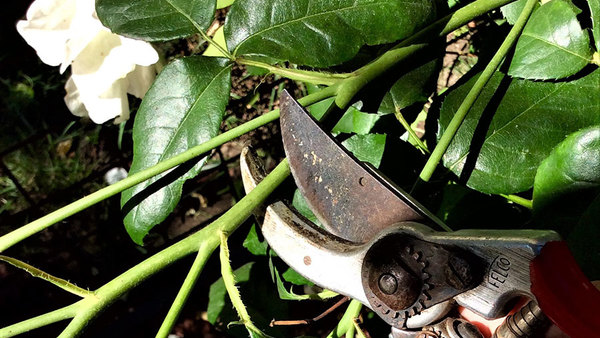

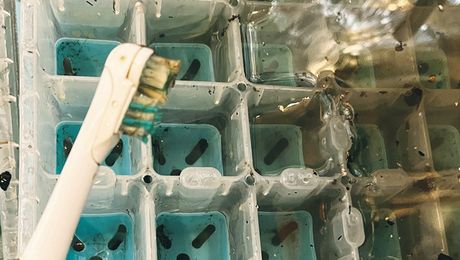










Comments
Log in or create an account to post a comment.
Sign up Log in